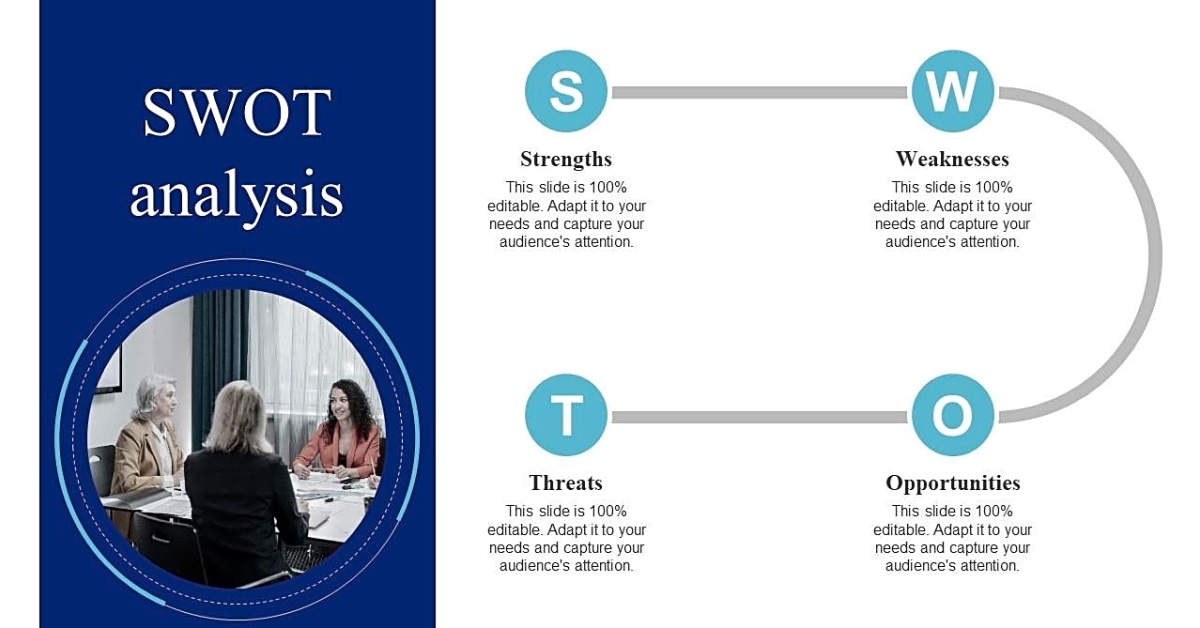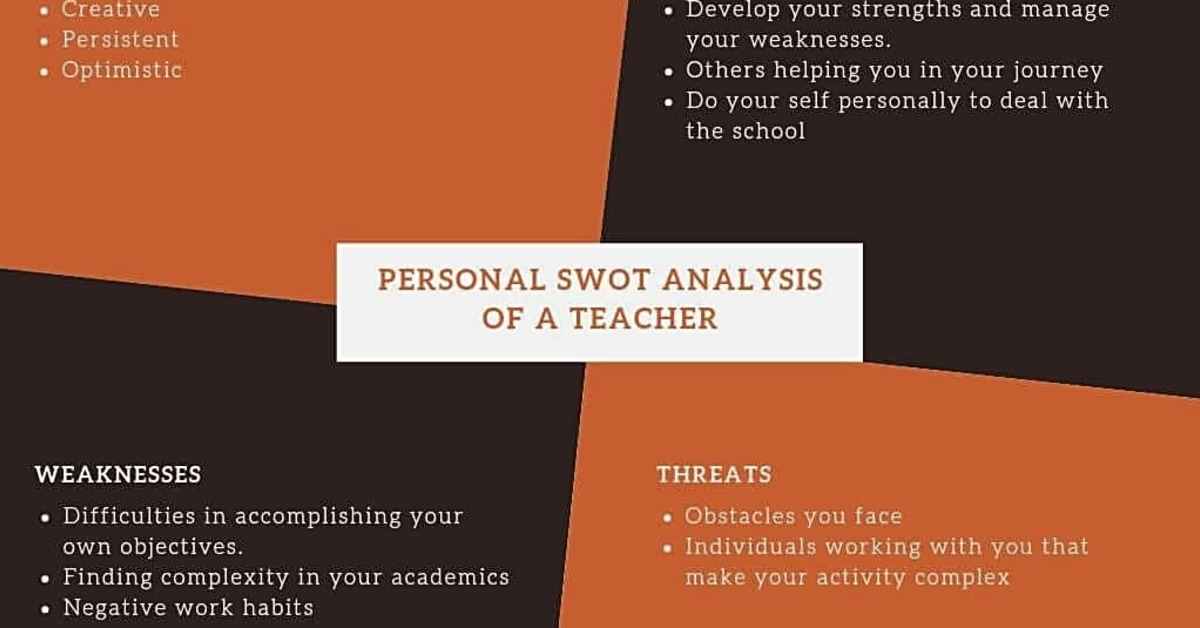Welcome to our article on using data and research in your SWOT Analysis. When it comes to business strategy, one of the most commonly used tools is the SWOT Analysis. This simple but powerful tool helps businesses assess their strengths, weaknesses, opportunities, and threats. However, a major limitation of traditional SWOT Analysis is the lack of specificity. Without concrete data and research, the analysis may lack depth and accuracy. In this article, we will explore how incorporating data and research into your SWOT Analysis can enhance its effectiveness and help you make more informed decisions for your business. So, let’s dive in and discover how to take your SWOT Analysis to the next level.
SWOT stands for strengths, weaknesses, opportunities, and threats. It is a strategic planning tool that helps identify internal strengths and weaknesses, as well as external opportunities and threats. While a traditional SWOT analysis typically relies on personal observations and brainstorming, incorporating data and research can add a new level of depth and accuracy to the process.
The first step in using data and research in your SWOT analysis is to gather relevant information. This can include market research, customer feedback, financial data, or any other relevant data sources. The key is to ensure that the data collected is accurate, reliable, and up-to-date. For example, if you are conducting a SWOT analysis for a new product launch, you may want to gather data on consumer trends, competitor products, and target market demographics.
Once you have gathered your data, the next step is to analyze it. This involves identifying patterns, trends, and correlations within the data that can help inform your SWOT analysis. For example, if your data shows a decline in sales for a particular product, this could be identified as a weakness in your SWOT analysis and prompt further investigation into potential solutions.
Another benefit of incorporating data and research into your SWOT analysis is the ability to compare and benchmark. By analyzing data from multiple sources, you can gain a better understanding of your strengths and weaknesses in comparison to your competitors. This can help you identify areas for improvement and potential opportunities for growth.
However, it is important to keep in mind that data and research should not be the sole basis of your SWOT analysis. Personal observations and insights are still valuable and should be considered alongside the data. Also, not all data may be relevant to your SWOT analysis, so be selective in what you choose to include.
In conclusion, incorporating data and research into your SWOT analysis can greatly enhance its effectiveness. By gathering accurate and relevant data, analyzing it, and using it to compare and benchmark, you can overcome the limitations of a traditional SWOT analysis and make more informed decisions. Remember to balance data with personal insights and use the information gathered to guide your strategic planning.
Comparing and Benchmarking with Data
When conducting a SWOT analysis, it is important to not only assess your own strengths and weaknesses, but also to compare and benchmark them against your competitors. This can provide valuable insights into where you stand in the market and how you can improve.
By utilizing data and research, you can gather information on your competitors and compare it to your own strengths and weaknesses. This allows for a more thorough analysis and a better understanding of your positioning in the market.
Balancing Data with Personal Insights
When conducting a SWOT analysis, it is important to remember that data and research should not be the only factors influencing your decisions. While they can provide valuable insights and information, it is also crucial to consider personal observations and insights.
Personal insights can come from your own experiences, interactions with customers or colleagues, or even gut instincts. These insights may not always be supported by data, but they can still offer valuable perspectives and considerations.
By balancing data with personal insights, you can create a more comprehensive and well-rounded SWOT analysis. This allows you to not only identify strengths, weaknesses, opportunities, and threats based on data, but also take into account your own knowledge and understanding of the situation.
Analyzing Data for Insights
In order to fully utilize the power of incorporating data and research into your SWOT analysis, it is crucial to analyze the data for insights. By doing so, you can identify patterns, trends, and correlations within the data, providing you with a deeper understanding of your strengths, weaknesses, opportunities, and threats.
One way to analyze data for insights is by using data visualization tools. These tools allow you to create charts, graphs, and other visual representations of your data, making it easier to spot patterns and trends. Additionally, you can use statistical analysis methods such as regression analysis or cluster analysis to uncover correlations within the data.
It is also important to consider the context of the data and conduct further research to gain a better understanding of the insights provided. This could involve looking at industry trends, consumer behavior, or competitor analysis. By combining different sources of data and research, you can gain a more comprehensive view of your SWOT analysis.
Using Data and Research to Enhance Your SWOT Analysis
Gathering relevant information from reliable sources is crucial when conducting a SWOT analysis. It allows you to have a well-rounded and accurate understanding of your business or personal situation. Data and research can provide valuable insights and help you make more informed decisions.
When gathering data, it is important to use reliable sources. This can include market research reports, industry publications, and government statistics. These sources can provide unbiased and up-to-date information that can enhance the accuracy of your SWOT analysis.
Additionally, utilizing research methods such as surveys, focus groups, and interviews can provide valuable qualitative data to complement the quantitative data gathered from reliable sources. By combining both types of data, you can get a comprehensive understanding of your strengths, weaknesses, opportunities, and threats.
Moreover, incorporating data and research into your SWOT analysis can also help you overcome the limitations of a traditional SWOT analysis. By having concrete data and evidence to support your analysis, you can avoid making assumptions or relying on personal biases.
In conclusion, using data and research in your SWOT analysis can greatly enhance its effectiveness. It allows for a more thorough and accurate analysis, helping you make better decisions for your business or personal development. So, make sure to gather relevant information from reliable sources before conducting your SWOT analysis.
Incorporating data and research into your SWOT analysis can provide a more comprehensive understanding of your business or personal development goals. By using accurate and relevant data, you can make more informed decisions and effectively overcome the limitations of a traditional SWOT analysis.

